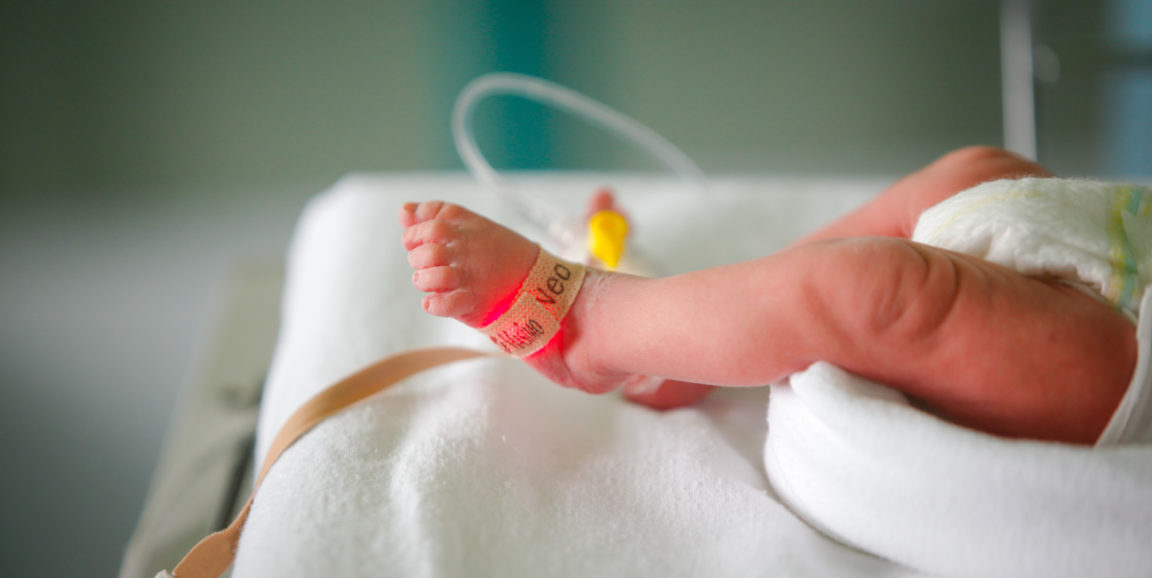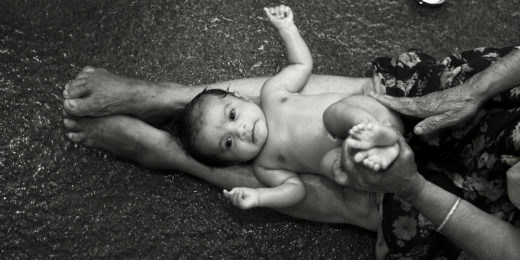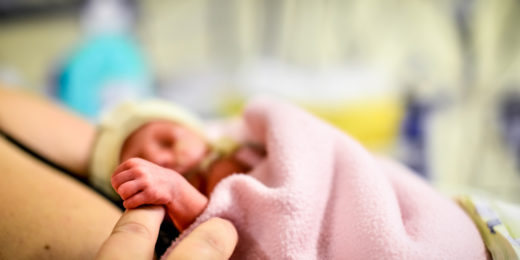Many of California's smallest and earliest-born babies don't receive the appropriate follow-up care after leaving the hospital. A recent, Stanford-led study reveals disparities in who is left out.
The research, which appeared recently in the Journal of Pediatrics, is part of an ongoing effort to track the success of California's High Risk Infant Follow-Up program. The program provides a series of check-ups to help identify long-term complications of high-risk birth, which can crop up over a child's early years. A variety of conditions can put infants in the high-risk category, including being born very prematurely (more than eight weeks early) or at very low birth weight (about 3 pounds or less); having congenital conditions such as heart defects requiring surgery; or experiencing certain birth injuries, such as prolonged oxygen deprivation during birth.
The study looked at factors linked to whether a child attends the final follow-up visit around age 2. About half of eligible children and their families didn't come to this visit. Children of Black mothers, teen moms and those whose moms are less educated were among those more likely to miss it, the researchers found.
"Our findings demonstrate disparities in access to important care and services and underscore that we must do more to address these inequities," said Stanford neonatologist Susan Hintz, MD, senior author of the research.
But Hintz is also encouraged by signs in the data that suggest building stronger physician-family relationships could narrow the gaps. Her team, which has studied many aspects of successes and barriers to neonatal intensive care unit follow-up in California, already has a track record of implementing changes that help reduce disparities in how follow-up is implemented.
Connecting babies to specialized care
Babies born early or at low birthweight face many complications, including respiratory, digestive, vision, hearing, mobility, cognitive and neurological problems. Although some challenges show up quickly, others take time to appear. For instance, babies who need to be tube-fed may later struggle to learn to eat by mouth, a challenge that may continue throughout toddlerhood.
California has a strong commitment to connecting these children to appropriate resources, with the state's neonatal intensive care units referring about 9,000 babies per year to the High Risk Infant Follow-up Quality Care Initiative, said Hintz. The California Perinatal Quality Care Collaborative, headquartered at Stanford, works in close partnership with California Children's Services to track performance of follow-up sites across the state. It also leads efforts -- such as Hintz's latest study -- to understand how the program can be more accessible, equitable and helpful to families.
The study focused on babies born weighing less than 3.3 pounds, all of whom are eligible for the statewide follow-up program. Of 19,284 such infants born between 2010 and 2015, only about half came to their final follow-up visit around age 2.
Ideally, each high-risk child goes to at least three follow-up visits, in California currently targeted at 4 to 8 months, around their first birthday, and between their second and third birthdays. The visits are in addition to the child's regular pediatric checkups and any other visits for needed medical care.
"The high-risk infant follow-up team is a robust interdisciplinary specialty team that evaluates a range of neurologic, developmental and other health issues for the child, as well as family psychosocial needs. The teams also determine what challenges aren't being addressed," Hintz said, adding that many high-risk babies have complicated physical and medical needs. "Even though these children are seeing their regular pediatrician more frequently, often the high-risk follow-up team can spot, for instance, when a child is not getting feeding therapy, or has motor issues, and if there are state services they qualify for."
If they don't attend the final visit, children can miss out on medical help and therapies that fit their growing needs as they become mobile, verbal, busy toddlers and preschoolers.
Who makes it to follow-up visits?
Children who attended an early high-risk infant follow-up visit were six times more likely to come to the final check-up than those who had not been to that first visit, showing that once families get connected to the program, they're likely to stick with it.
However, according to the study, infants with teen mothers, those who lived further from their high-risk follow up clinic and those with Black mothers were 7% to 12% less likely to attend the last visit. Those born very early, or whose mothers had more education (a college or postgraduate degree), were born outside the United States, or were primarily Spanish-speaking, were 6% to 21% more likely to come to follow-up visits.
These results suggest that overall, some marginalized families face larger obstacles in attending follow-up visits, and that experts should consider how to make the program more accessible to them, Hintz said.
"Every time I see inequities like these, I think of it more as our failure to address the fundamental issues," she said.
For instance, families may be struggling to find transportation to the follow-up clinic or get time off from work. Or, they may feel a sense of distrust toward the medical establishment.
In the study, the authors suggest investigating whether providing transportation to families living at a distance from clinics, opening more clinic locations and home-visit options, and investigating whether telemedicine could help narrow the gap. (However, Hintz noted that computer and internet access is also inequitable, and not all medical assessments can be conducted virtually.)
The biggest opportunity, she said, is to increase communication between families and follow-up teams as soon as it's evident a baby might need high-risk infant services, which can build trust, help the family understand the value of high-risk infant follow-up, and help the medical team understand the nuances of each family's needs.
"Ideally this should happen immediately in the NICU course, or even prenatally," Hintz said. "If a woman comes into the hospital in preterm labor, and our colleagues in obstetrics are able to stave off delivery for a few days, we can lay the framework for how the family can engage with the medical team in the NICU."
Her team also wants to learn more about what aspects of the follow-up program families most value, or what they feel is missing.
"My colleagues and I talk a lot about what we think are the important outcomes," Hintz said. "We need to do a better job of listening to families and ask them, 'What do you want at these visits? What do you feel would be beneficial?'"
Photo by MoiraM






